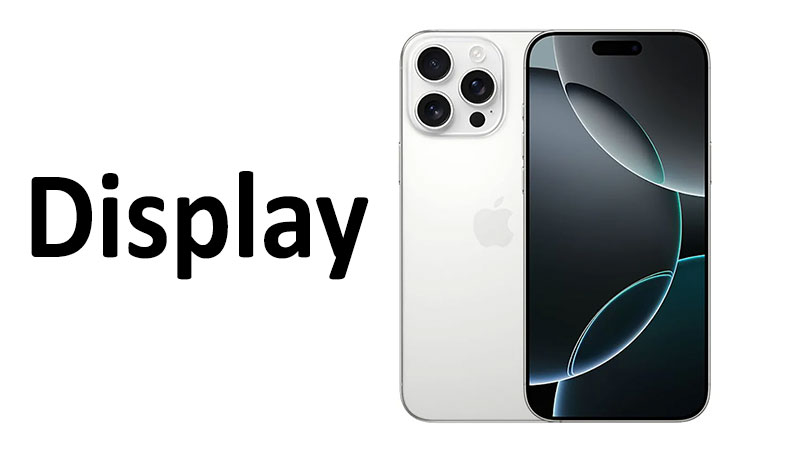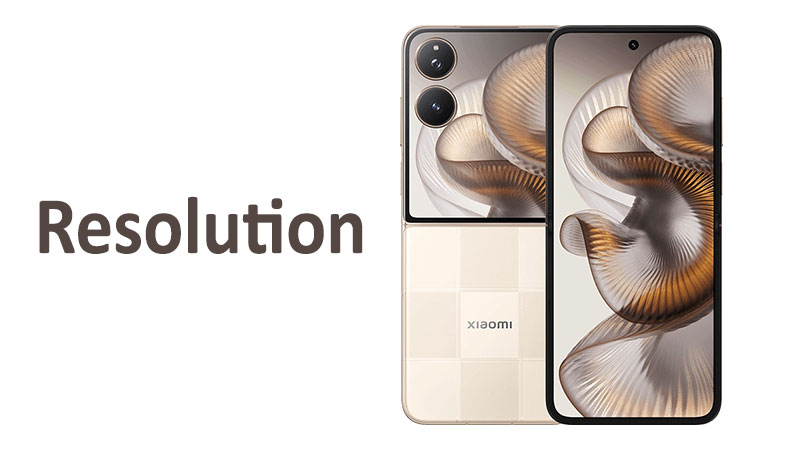The display of a smartphone is its window to the world. It is the primary interface for all interactions. For the Apple iPhone 16 Pro, the display is not just a component; it is a centerpiece of its user experience. It’s where you view photos, watch videos, and interact with applications. The Apple iPhone 16 Pro display represents a significant step forward in mobile screen technology. This article provides a comprehensive and detailed analysis of its resolution, quality, and features, and explores what makes it a leader in the industry.
The Technology Behind the Brilliance: LTPO Super Retina XDR OLED
At the heart of the iPhone 16 Pro’s display is its cutting-edge panel technology. It features a LTPO (low-temperature polycrystalline oxide) Super Retina XDR OLED screen. This technology is a cornerstone of its performance.
LTPO: Efficiency and ProMotion
LTPO is a key technology for power efficiency. It allows the display to dynamically change its refresh rate. This means the screen can drop to as low as 1Hz for static content. This is crucial for features like the Always-On display. For fast-moving content, the display can ramp up to a silky-smooth 120Hz. This adaptive refresh rate is what Apple calls ProMotion. It saves battery life without compromising performance.
Super Retina XDR OLED: Unmatched Visuals
The Super Retina XDR branding signifies a top-tier OLED panel. OLED technology provides perfect blacks by turning off individual pixels. This results in an infinite contrast ratio. XDR (Extreme Dynamic Range) enhances this by offering exceptional brightness for HDR content. This combination makes colors pop and details incredibly vivid.
A Closer Look at Resolution and Clarity
The Apple iPhone 16 Pro display has a resolution of 1206 x 2622 pixels. This results in a pixel density of approximately 460 ppi (pixels per inch). This high density ensures that text and images are sharp and clear. Individual pixels are virtually indistinguishable to the human eye.
Resolution Compared to Previous Models
The iPhone 16 Pro sees a slight increase in both screen size and resolution compared to its predecessor, the iPhone 15 Pro. The iPhone 15 Pro had a 6.1-inch display with a resolution of 2556 x 1179 pixels. The iPhone 16 Pro, with its 6.3-inch screen, offers a resolution of 2622 x 1206 pixels. This change means that despite the larger screen, the pixel density remains consistent. The user experience is not diminished by the larger canvas.
Pros and Cons of the Display Resolution
Pros:
- Exceptional Sharpness: The 460 ppi density delivers crystal-clear images and text.
- Optimal for Content: High resolution is perfect for viewing 4K videos and high-quality photos.
- Future-Proofing: This resolution ensures that the display will be able to handle increasingly detailed content for years to come.
Cons:
- Minor Upgrade: The resolution increase from the previous model is not revolutionary. It’s an evolution, not a radical leap.
- Power Consumption: A higher resolution requires more power from the GPU and battery, although the LTPO technology mitigates this.
The Key to a Brighter Experience: Brightness and HDR
The iPhone 16 Pro’s display shines, literally. It has impressive brightness capabilities that cater to various viewing conditions.
Typical vs. Peak Brightness
The display offers a typical maximum brightness of 1000 nits. This is for standard use, ensuring the screen is easily readable indoors and in most outdoor scenarios. When viewing HDR content, the brightness can peak at an impressive 1600 nits. This highlights and shadows in HDR movies and shows are stunningly realistic. A new feature for the iPhone 16 Pro is its ability to reach 2000 nits of peak brightness in high brightness mode (HBM). This is specifically for outdoor use under direct sunlight. This ensures the screen remains perfectly visible even on the brightest days.
Comparison to Competitors
The 2000 nits HBM brightness puts the iPhone 16 Pro on par with or ahead of many competitors. Some flagship Android devices also offer similar or higher peak brightness. However, Apple’s color calibration and overall display optimization are often considered top-tier. The combination of brightness, color accuracy, and contrast ratio makes it a standout performer.
Durability and Protection: The Ceramic Shield
A great display is only as good as its protection. The iPhone 16 Pro features a new generation of Ceramic Shield glass. This material is a key part of its durability.
What is Ceramic Shield?
Ceramic Shield is a glass-ceramic material with nano-ceramic crystals. It is tougher than traditional smartphone glass. Apple claims it is the strongest smartphone glass on the market. It offers a Mohs hardness level of 4, providing excellent scratch resistance.
The Mohs Scale and Real-World Protection
The Mohs hardness scale measures a material’s resistance to scratching. A level of 4 is very good for everyday items like keys and coins. However, it’s important to note that dust and sand particles often contain quartz, which is much harder (Mohs level 7). Therefore, a screen protector is still a wise investment for ultimate scratch protection. The Ceramic Shield is primarily designed to prevent cracking from drops.
Features that Enhance the User Experience
Beyond the core specifications, the iPhone 16 Pro display is packed with features that improve usability.
ProMotion Technology and User Experience
The 120Hz ProMotion technology makes everything feel incredibly fluid. Scrolling through web pages, navigating the interface, and playing games is buttery smooth. The adaptive nature of the refresh rate ensures that this smoothness doesn’t come at the expense of battery life. It’s a feature you don’t realize you need until you’ve experienced it.
HDR10 and Dolby Vision
The display supports both HDR10 and Dolby Vision. These are two of the most popular HDR standards. This means that a wide range of content, from streaming services like Netflix and Apple TV+ to your own videos, will look spectacular. The colors are more lifelike, and the contrast is more pronounced.
Always-On Display
The Always-On display, enabled by the LTPO technology, is a subtle but highly useful feature. It shows the time, widgets, and lock screen wallpaper in a dimmed state. This makes it easy to glance at important information without fully waking the phone. It’s a convenient feature that saves time and effort.
Important Points for the Buyer
Is the Upgrade Worth It?
For those with an iPhone 15 Pro, the display upgrade on the 16 Pro is incremental. The larger size and resolution are nice but not a game-changer. However, if you are upgrading from an older model (e.g., iPhone 13 Pro or earlier), the difference will be monumental. The brightness, refresh rate, and overall quality are a significant leap forward.
Display Maintenance and Care
Despite the robust Ceramic Shield, proper care is essential. Use a microfiber cloth to clean the screen. Avoid using harsh chemical cleaners. Consider a quality screen protector, especially if you are concerned about scratches from everyday debris.
Conclusion: A Masterclass in Mobile Display Technology
The Apple iPhone 16 Pro display is a testament to Apple’s commitment to quality and user experience. It combines a high-resolution, high-refresh-rate LTPO Super Retina XDR OLED panel with exceptional brightness and durability. The seamless integration of features like ProMotion and Dolby Vision results in a display that is not only technically superior but also a joy to use. While the incremental changes may not compel a direct upgrade from the previous model, the iPhone 16 Pro display sets a new standard for what a smartphone screen can be. It delivers a visually stunning and responsive experience that is a key selling point for this flagship device.
FAQ
What is the screen size of the Apple iPhone 16 Pro?
The Apple iPhone 16 Pro has a 6.3-inch display.
Does the iPhone 16 Pro have a 120Hz refresh rate?
Yes, it features a 120Hz adaptive refresh rate with ProMotion technology.
What is the resolution of the iPhone 16 Pro’s screen?
The resolution is 1206 x 2622 pixels, with a density of 460 ppi.
How durable is the iPhone 16 Pro display?
It is protected by the new generation of Ceramic Shield glass, which is highly resistant to drops and scratches.
Can the iPhone 16 Pro display be viewed easily in direct sunlight?
Yes, the display has a high brightness mode (HBM) with a peak of 2000 nits, making it very visible in bright outdoor conditions.



